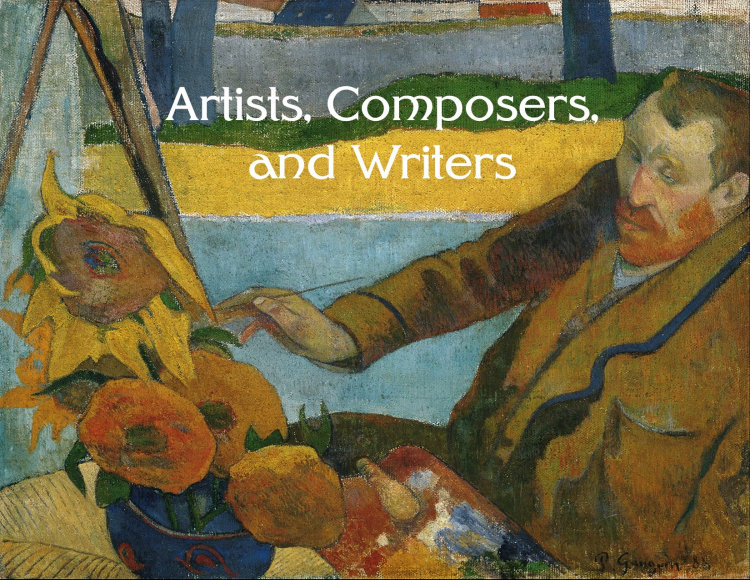GO TO: [A–C] [D–G] [H–K] [L-O] [P–S] [T–V] [W–Z]

He is first recorded as a painter in 1417, and by 1423 had joined the Dominican Order in Fiesole, where he remained all his life, becoming prior in 1450. Although not an innovator like Masaccio, he is noted for the purity of his style, which set the tone for Florentine art of the mid-quattrocento (1400s). He took the name Fra Giovanni, but it is as Fra Angelico (Angelic Brother), and later Beato Angelico, that he is recorded. [8]
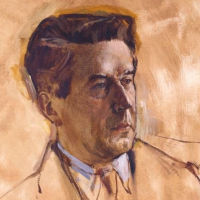
Like most choreographers, Ashton began as a dancer, and continued performing even as his fame blossomed as a choreographer. He became artistic director of the Royal Ballet in 1963, but had worked with the company and its various predecessors since 1935, responsible for creating many of the works that are the foundations of English ballet today. [2]
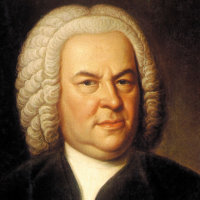
1685–1750. The towering genius of German music in the earlier 18th century, Bach was most famous in his time as an organist and choirmaster, most notably at the Thomaskirche in Leipzig. His work includes two Passions, numerous cantatas, and keyboard and orchestral works that codify and extend the possibilities of counterpoint in his time. [8]
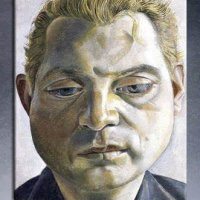
Bacon was born in Dublin to English parents, but left home in his teens to move to London and thence to Paris. He had no formal training as a painter, but when he emerged in 1945 with Three Studies for Figures at the Base of a Crucifixion, he both galvanized and divided critics by the fierceness of his imagination and savagery of his style. Alan Bowness, the former director of the Tate, wrote that "no artist in our century has presented the human predicament with such insight and feeling." [12]
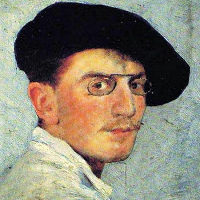
Beginning as a painter, Bakst became the leading designer of Diaghilev's Ballets Russes in Paris, designing the premieres of The Firebird and Daphnis and Chloe among others. There is a Bakst-designed theatre in the Evergeen Mansion in Baltimore. [2]
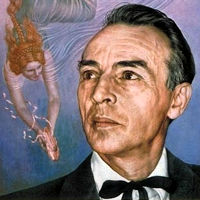
After working with Diaghilev in Paris, Balanchine was invited to America in 1933 by Lincoln Kerstein, with whom he founded the New York City Ballet, remaining its artistic director for 35 years. One of the most influential choreographers of the century, he is especially noted for his abstract works with minimal decor but the greatest musicality. [10]

Although Béjart created many large expressionist works with grand themes, he is probably best known for his version of Ravel's Boléro, created for the Yugoslav ballerina Duška Sifnios, but since danced by many other female stars. [2]

One of a family of artists, he more than anyone was responsible for developing the characteristic Venetian style of painting in layers of oils, no doubt learned from the Flemish masters. This gives his pictures their extraordinary light, whether portraits or religious subjects. [6, 8, 10]
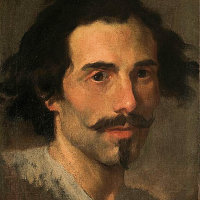
He is to the Italian Baroque what Michelangelo was to the Renaissance, the supreme master of many arts. The sense of movement and drama in his sculpture carries through into his architecture and even his town planning, such as the piazza before St. Peter's. [10]
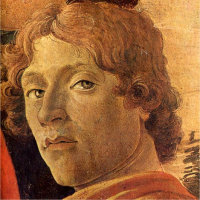
Botticelli's work was neglected for centuries, but he is now acknowledged as the leading Florentine painter of the later quattrocento. Although he produced numerous religious paintings, he is best known for two large mythological works: Primavera (c.1480) and The Birth of Venus (c.1485). [7, 8, 9]
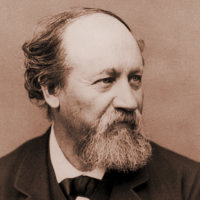
The son of a sailor, Boudin spent most of his life in and around Le Havre, painting beach and harbor scenes notable for their pearly tone and luminous skies. Many of these were painted out of doors, and he was he who introduced fellow Le Havre native Claude Monet to this practice, which would be a central tenet of Impressionism. [1]
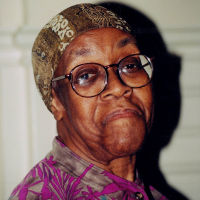
Brooks was the first African American to win the Pulitzer Prize, and the first woman of her race to be appointed to the post now known as Poet Laureate of the United States. [9]

Although he was never a formal member of the Pre-Raphaelite Brotherhood, Ford shared their belief that art should be true to nature and morally edifying. His best-known works are The Last of England (1855) and the large street scene Work (1863). [7]

Elizabeth Barrett had established herself as a poet well before she met Robert Browning, whom she eventually married at the age of 40, and was disinherited by her father for doing so. Her sequence of love-letters to Browning, Sonnets from the Portuguese (1850) have been widely influential. [9]
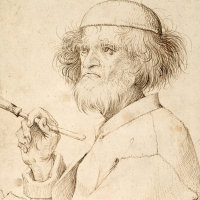
Considered the greatest Northern European painter of his time, he produced mainly moralistic works characterized by their high viewpoint and close observation of ordinary people. Also spelled "Brueghel" and "Brughel." [5]
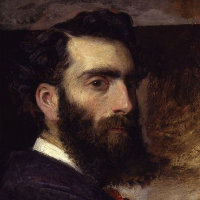
Calderon was an English painter of French birth (mother) and Spanish (father) ancestry who initially worked in the Pre-Raphaelite style before moving towards historical genre. He was Keeper of the Royal Academy in London. [Wikipedia] [7]
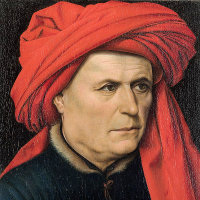
Campin has gradually emerged from scholarly shadows as the probable painter of a handful of works previously attributed to a conjectural "Master of Flémalle." In spite of the still-uncertain identification of many works associated with him, there is no doubt of his status as a key figure in the transition of Northern art from Gothic traditions to modernity. [8]
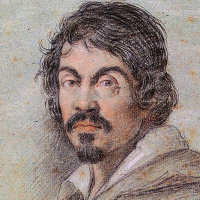
Arguably the most original Italian painter at the start of the 17th century, he treated mostly religious subjects in a bold realist style that shocked his contemporaries, but was nonetheless widely influential. His figures tend to be large in proportion to the canvas, their actions and reactions dramatic, and their appearance that of ordinary working people. Caravaggio also often used concealed light sources that increases the drama of his depictions. [10]
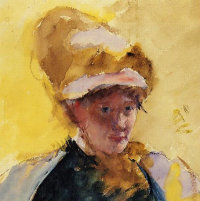
The daughter of a wealthy Philadelphia family, Cassatt studied in Paris and settled there in 1874. She became friends with the Impressionists, especially Degas, and exhibited in four of their shows. An early feminist, her own work featured especially the everyday lives of women. She also had an influence in persuading her wealthy friends back home to buy Impressionist paintings. [8]

With Gauguin and Van Gogh, though painting in a very different style from either, Cézanne is considered one of the leading artists of the Post-Impressionist period. Working first in an academic style, he was converted to Impressionism by his friend Camille Pissarro. After exhibiting in the first two group shows, however, he returned to his native Aix-en-Provence, living like a recluse and painting pictures whose play with space and surface would revolutionize 20th-century art. [2]
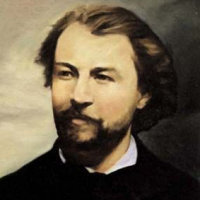
A pupil of Jules Massenet, Charpentier found fame with his opera Louise (1900), which combined romance and realism, but this success was not to be repeated. [12]
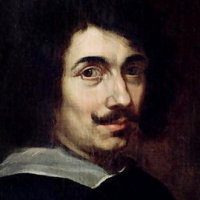
His Arcadian and harbor scenes, principles of composition, and use of light earned him the reputation as the greatest of all landscape painters, and his influence especially in France, Britain, and America lasted until the mid-19th century, not only in art but also landscape gardening. [5]
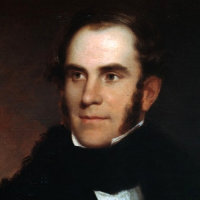
A founder of the Hudson River School. Towards the end of his career, he turned to grand historical and allegorical themes, of which The Course of Empire was one. [5]
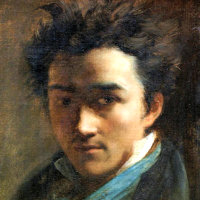
A friend and exact contemporary of Delacroix, moved in the circle of Romantic painters of the 1820s, and to a certain extent was one himself, painting mainly historical and genre subjects. [11]

Collier was a highly successful portraitist and painter of scenes from life, often with a "puzzle picture" element. He was connected through both his marriages to the family of Thomas Huxley, President of the Royal Society. [7]
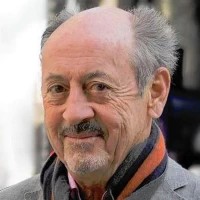
One of the best-known and most approachable contemporary American poets, Collins was Poet Laureate of the United States between 2001 and 2003. [3]

Even more than his contemporary Turner, Constable was the leading English landscape painter of the 19th century. Living in East Anglia, he was influenced by the Dutch landscapists painting very similar country. He made numerous outdoor sketches of clouds and trees, with free and brilliant handling of paint, but he reverted to a more sober style in his paintings for exhibition. [5]
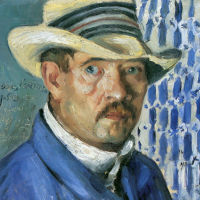
After training in Paris, he was hailed as a proponent of "German Impressionism," although his affinities were more with Rembrandt and Manet. Two things affected the Expressionist freedom of his later style: marriage to one of his young students, and his recovery from a crippling stroke in 1911. [4]

Courtois was a late 19th-century painter in the French academic tradition, known for his portraits and genre scenes. [6]
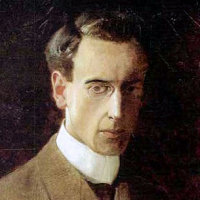
An English painter of portraits, historical, and literary subjects, he has been described as "the last of the Pre-Raphaelites." [11]
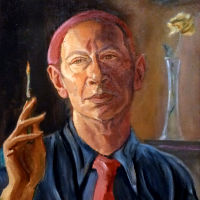
In addition to several thousand poems, Cummings also wrote four plays and two novels; he painted his own portrait in the National Portrait Gallery. A leading modernist, he was known for radical experiments in orthography and punctuation, frequently including the elimination of upper-case letters, but he deprecated the use of this style for his own name. [9]
GO TO: [A–C] [D–G] [H–K] [L-O] [P–S] [T–V] [W–Z]
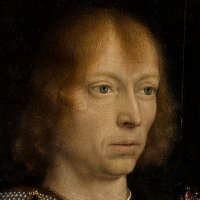
David spent almost all his career in Bruges, taking over Hans Memlinc's mantle as the leading painter in that important art center. He was highly accomplished, but not especially an innovator. [8]
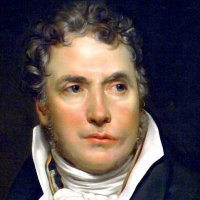
The leading Neoclassical artist of his day, David replaced rococo frivolities with stern history paintings with strong moral content. He was a dedicated supporter of the Revolution and politically active as a Deputy. He was imprisoned briefly after the fall of Robespierre, but resurfaced as principal painter to Napoleon. Through his many pupils, he influenced French salon style for a generation. [11]
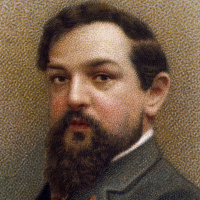
Debussy was one of the most original French composers of the 20th century and, with Ravel, the prime exponent of what is commonly called Impressionism, the creation of musical images through harmony, texture, and scraps of melody. Although an exquisite orchestrator, his most original works are probably those written originally for piano, including two books of Préludes from the last years of his life. [1]
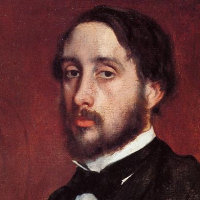
The son of a wealthy banker, he originally trained for the law. When he did go into art, he painted mostly traditional subjects until Manet introduced him to the Impressionists, at which point he turned entirely to scenes from everyday life. Although he was the only artist to participate in all eight Impressionist shows, he strongly resisted the term, and pursued his own quite original course. [1, 3, 7]
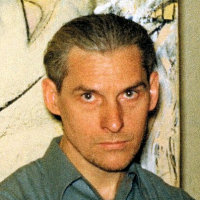
Born in Holland, de Kooning came to America as a stowaway in 1926, became an American citizen in 1961. By this time, he was already celebrated as a leading figure in the Abstract Expressionist movement. His paint handling was just about as active as Jackson Pollock's, and his color sense more exuberant, but he never completely abandoned figurative subjects, such as in his series of Women (1953). [12]
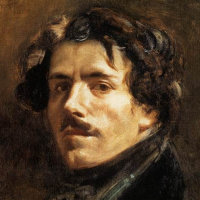
The leading French painter of the Romantic movement, he is known for his brilliant Rubensian color and his dramatic compositions. Especially in the first half of his career, these included political themes, such as The Massacre at Chios (1824) and Liberty Leading the People (1830), as well as subjects from Romantic literature. He also visited North Africa, and was constantly fascinated by the exotic. [11]
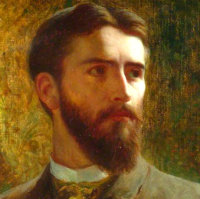
Sir Francis Bernard Dicksee was the son, brother, and cousin of successful painters. Like his father, he had a particular interest in literary and historical subjects. He became President of the Royal Academy in 1924. [11]
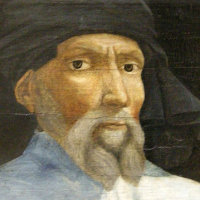
The outstanding sculptor of his day, Donatello ranks with Brunelleschi in architecture and Masaccio in painting as a standard-bearer of the Renaissance. He studied under Ghiberti, but soon struck out on his own, producing an immense variety of work over a long career, showing technical daring, psychological insight, and a characteristic grace. [9]

Dove, who spent some time in France in the ferment of the first decade of the century, is credited with painting the first abstract pictures in America, although he did not exhibit them at the time. [12]
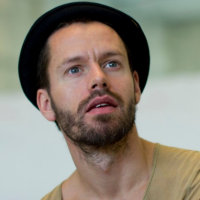
After five years as a professional dancer in Sweden and Holland, Ekman began a free-lance career as a choreographer when he was 21. His works, which move beyond traditional ballet technique in startling and inventive ways, have been created for or taken up by companies all over Europe. [12]
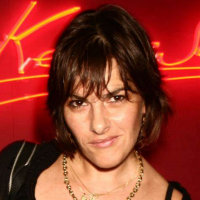
Notorious for her confessional installations, Everyone I Have Ever Slept With 1963–1995 (a tent appliqued with the names of her many partners) and My Bed (the debris of a depressed week in bed in 1999), Emin is also a Royal Academician and Professor of Drawing at the Royal Academy, [12]

A second-generation Abstract Expresionist, she was the first to develop the technique of pouring thin paint onto unprimed canvas, greatly influencing several of her better-known contemporaries. [5, 12]
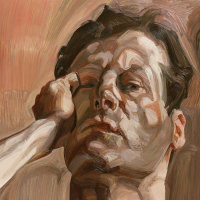
Born in Berlin, the grandson of Sigmund Freud, Lucian came to Britain in 1931 with his parents and became a British citizen in 1939. One of the leading representational painters in postwar Britain, he was also her leading portraitist, albeit in an uncompromising and less traditional style. [6]
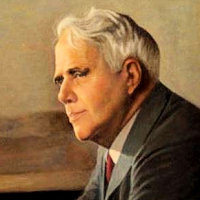
Finding little success in America, Frost moved with his family to England in 1912, where his quality was recognized by then-critic (and later poet) Edward Thomas. Frost returned to America in 1914, and built a reputation as the bard of rural New England and latterly America's best-known poet. [5]
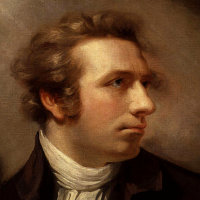
Born Johann Heinrich Füssli, he was Swiss painter who settled in England and became Professor of Painting at the Royal Academy. His bold hyper-dramatic style had a great influence on younger artists, including William Blake, and his interest in supernatural subjects would make him an important precursor of Romanticism. [11]
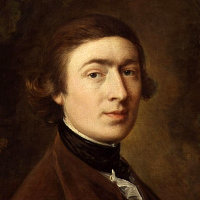
He became the dominant English portrait painter in the second half of the 18th century, but also produced numerous independent landscapes for his own pleasure. In 1768, he became a foundation member of the new Royal Academy. [6]

Influenced at first by the Impressionists, Gauguin soon abandoned that style for one that involved large flat areas of pure color. He is associated with three areas: Brittany, where he developed his style; Provence, where he lived with Van Gogh; and Tahiti, perhaps indulging a taste for the tropics inherited from his Peruvian mother. He is considered one of the giants of the Post-Impressionist period. [2]

Trained by her father Orazio Gentileschi, Artemisia began producing work in her teens that outstripped his in dramatic power and psychological observation, especially in her protrayals of strong women. She was the first woman to be elected to the Florentine Academy and, at 23, one of its youngest members. [7]

Géricault's monumental Raft of the Medusa (1819) was a seminal work in French art, treating a contemporary political scandal with searing humanity coupled with a monumentality that owes much to Michelangelo. His many studies for this work, including corpses and severed limbs, his portraits of the insane, and above all his numerous paintings of horses, made him a key figure in French Romanticism until his tragic death of a riding accident at the age of 32. [11]
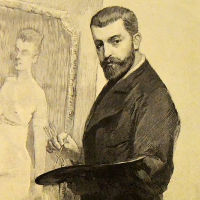
Gervex began in an academic vein, but later devoted himself to depictions of modern Parisian life. Although many of his works show fishionable society, he could also paint workmen and the bourgeoisie. [3]
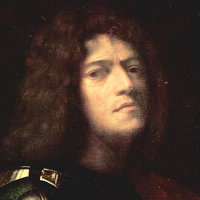
Almost nothing is known of his life, and the catalogue of his undisputed works is very small, his fame and influence are quite disproportionate to the size of his output. He was an exquisite colorist, the first to specialize in cabinet paintings for private patrons rather than religious commissions, and the first painter to subordinate subject matter to the evocation of mood. [9]
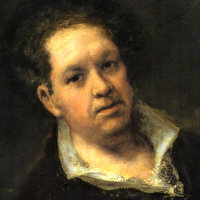
A slow developer, he began as a somewhat conventional Rococo painter and tapestry designer, but developed into an insightful portraitist, and—after going totally deaf in 1792—a savage social critic as a printmaker, and painter of some of the most terrible events of his time. His series of "black paintings" from the end of his life display a shattering visionary intensity. [11]
GO TO: [A–C] [D–G] [H–K] [L-O] [P–S] [T–V] [W–Z]
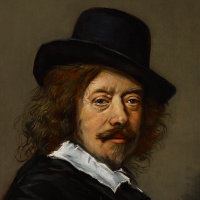
Though born in Antwerp, he moved to Harlem with his parents and spent the rest of his life there. 24 years older than Rembrandt, he was the first great master of the Dutch Golden Age and its leading portraitist. His style is remarkable for the effects he could achieve from a few swift touches of paint. [6]
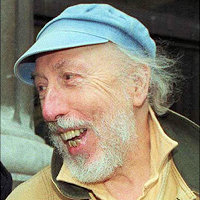
Discovering his ability as an technical draughtsman, Hamilton turned to art in his twenties, and soon became one of the leading figures in postwar British art. His collage Just what is it that makes today's homes so different, so appealing?, produced for the 1956 exhibition This Is Tomorrow, is considered one of the first creations of Pop Art anyhere. [12]
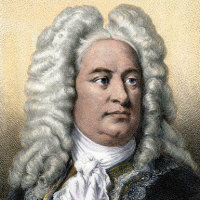
Gradually over the last half-century, Handel's 42 operas and numerous dramatic oratorios have been recognized as placing him on the level of Mozart and Verdi as an opera composer. Born in Germany and trained in Italy, he dominated the English musical scene in the first half of the 18th century, writing instrumental, ceremonial, and religious music in equal profusion. [8]
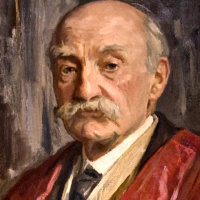
Although thinking of himself primarily as a poet, Hardy is most often remembered as the author of pastoral realist novels set in "Wessex," his name for a large swath of Southwest England, the country that he loved. While Far From the Madding Crowd ends happily, more of his novel have an elegaic pessimism that is found also in his verse. [3]
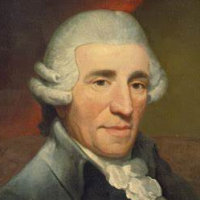
With Mozart, the leading musical genius of the late 18th century. Equally prolific, but far longer lived, he wrote 104 symphonies, 68 string quartets, 16 operas, and 14 masses, together with the two great oratorios, The Creation and The Seasons. [8]
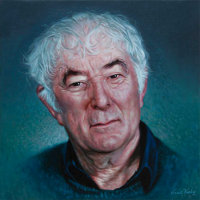
Nobel Prizewinner Heaney was born in Northern Ireland, making him technically a British citizen. But he has preferred to identify himself with the Republic of Ireland, portraying her scenery and commenting on her culture and politics. In later years, he taught at Harvard. [5]
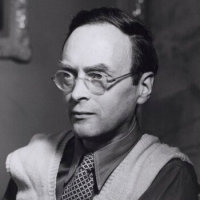
Working on the borderline between representation and abstraction, he developed a characteristic wide-canvas format and achieved effects of considerable range. [5]
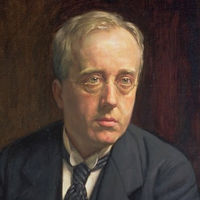
The son of a church organist of Swedish descent, Holst studied first the piano and then the trombone. With Ralph Vaughan Williams, he was largely responsible for the revival of interest in English folk music at the turn of the century. He worked most of his life as a church musician and in education, but wrote numerous works, of which The Planets (1918) is the largest and most famous. [4]
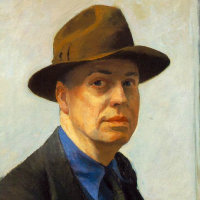
In all his career, Hopper maintained a balance between the social realism of his teacher Robert Henri, and the simplified forms of the abstraction that came into play soon after. Painting almost exclusively scenes from contemporary life, he managed to universalize the specific, and give everyday situations a powerful aura that transcended their literal subject. [3]
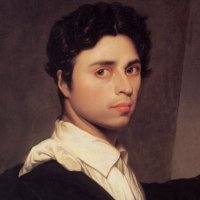
Ingres was trained in the academic tradition, and although one of the great masters of French Romantic era, his style was always marked by a cool classicism and precision of line, in contrast to the freer handling of paint by his contemporary Delacroix. [6]
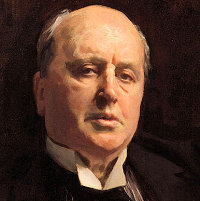
Born in New York, James traveled a lot with his family as a child, and settled in England in 1869. Many of his novels concern American expatriates in Europe, and the later ones especially have been hailed as the bridge to Modernism. His novella The Turn of the Screw (1898) is one of the most influential ghost stories of all time. [11]
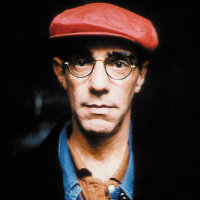
After training at the Slade School in London, Jarman began his career as a stage designer, including major projects in opera and ballet. His stage collaborations with Ken Russell led to his work in film, which included numerous experimental works, music videos, and a beautiful rendering of Benjamin Britten's War Requiem. A lifelong gay activist, he died of AIDS in 1994. [12]

Kenyon studied at the University of Michigan in her home town of Ann Arbor. In 1972, she married her teacher, poet Donald Hall, and moved with him to New Hampshire. At the time of her untimely death from leukemia, she was Poet Laureate of New Hampshire. [5]
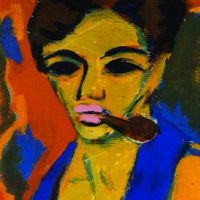
Kirchner was the co-founder of the Expressionist group Die Brücke (the bridge) in 1905, and its leading figure, painting incisive angular figures in strong colors. At the outbreak of WW1, he volunteered for service as a driver, but was invalided out due to poor health, both mental and physical. He never fully recovered, and spent the last part of his life in seclusion in Switzerland. [4]
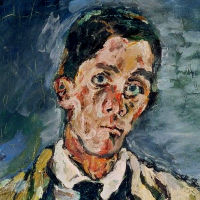
One of the leading Expressionist painters in Vienna, Kokoschka was also a poet and playwright. Starting mainly as a portraitist with a distinctive style of very free brushwork, he widened his interests to include landscapes, cityscapes, and other subjects when he began to travel in the later 1920s. Denounced as degenerate by the Nazis, he became first a Czech and later a British citizen. [4]
GO TO: [A–C] [D–G] [H–K] [L-O] [P–S] [T–V] [W–Z]
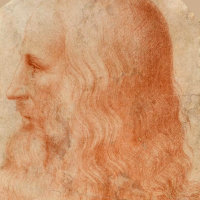
With Michelangelo and Raphael, one of the triumvirate of artistic geniuses that crown the High Renaissance. He trained in Florence with the painter Andrea Verrocchio before moving to the court of Ludovico Sforza in Milan. He spent the last years of his life at the court of François I in France. The naturalism and luminosity of his painting, and his effects of sfumato (or modeling as if by smoke), were widely influential. It is his notebooks, however, that are the best testament to the range of his genius, containing remarkable observations of the natural world, and mechanical inventions centuries before their time. [8, 9]

Lewis worked in a variety of genres, but he is best known for his naturalistic lanscapes and closely-observed studies of country people. [5]
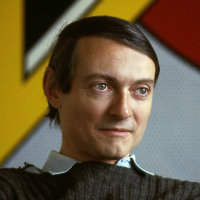
Lichtenstein's large-scale blow-ups of images from cartoon romances became one of the defining memes of American Pop Art. He described them as "industrial painting," thus erasing the distinction between fine and commercial art. Later, he began to apply his unmistakable style to reworking classic paintings, such as Van Gogh's Bedroom at Arles. [12]
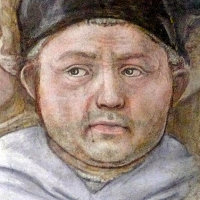
A reluctant friar, Lippi was released from his vows after an affair with a nun (that produced their painter son Filippino), but continued to sign himself "Brother Lippi." His exquisite drawing, pale color harmonies, and formal innovations set the standard for mid-quattrocento Florentine painting, as seen for example in the work of Botticelli and his son. [9]
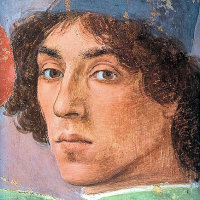
The son and pupil of Filippo Lippi, he later studied with Botticelli, adopting a manner close to both masters. Although now overshadowed by these larger figures, he enjoyed a high reputation in his lifetime, being described by Lorenzo de' Medici as "superior to Apelles." [9]
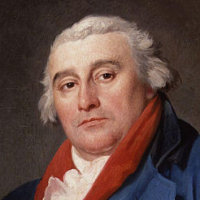
Born in Strasbourg, he settled in London in 1771, designing theatre sets for Garrick and Sheridan, publishing picuresque views of Britain, and painting large canvases mostly exalting the Sublime. [11]
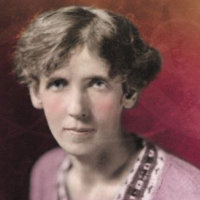
Coming from an academic family, Macaulay started writing early, and worked for the Government Propaganda Office during the First World War. The best-known of her novels, which were somewhat influenced by Virginia Woolf and share her committed feminism, is The Towers of Trebizond (1956), her masterpiece. [3]
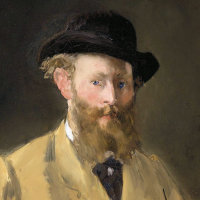
Manet is arguably the greatest French painter in the third quarter of the 19th century. Though primarily a realist, he was influenced by older artists such as Titian and Velasquez. He was admired by the young Impressionists, became friends with Monet, and produced a number of works in their style, but he never exhibited with them, preferring to retain his own status in the official Salons. [1, 3, 9]

Matisse and Picasso stand as the giant pillars of French art in the first half of the 20th century. Matisse was the slower starter and the less versatile, but he stands alone for the richness of his color and the sensuality of his forms, whether in painting or in sculpture. Suffering from crippling arthritis at the end of his life, he produced a completely new oeuvre in colored-paper collage. [4]

Sir Peter Maxwell Davies was Master of the Queen's Music (composer laureate) for the last decade of his life, celebrating his by-then establishment status. But he began as a radical, writing works such as Eight Songs for a Mad King that stretched the boundaries of performance practice. Like Britten, he has always liked working for specific performers and places, including many works for his adopted home of Orkney to the North of Scotland. [12]
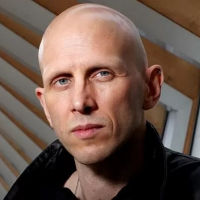
McGregor is the first Resident Choreographer of the Royal Ballet to come from a contemporary dance rather than classical background. He has also worked in theater and film, and runs his own company in addition to his work with the Royal Ballet. [10]

Mercury was born Farrokh Bulsara to Parsi-Indian parents in Zanzibar; he came to England when he was 18. In 1970, he formed the band QUEEN with guitarist Brian May and drummer Roger Taylor, fronting the group and writing many of its songs. He was know for his flamboyant style and intense connection with the audience. Mercury died of AIDS in 1991. [12]
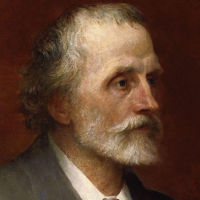
Meredith was a respected poet and relatively minor novelist of the Victorian era. His autobiographical sonnet squence Modern Love (1862), however, broke new ground in telling of the break-up of a marriage in psychologically realistic detail. [9]
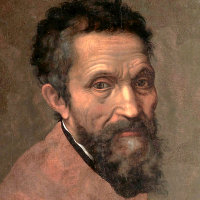
A towering universal genius, his work virtually defines the Italian High Renaissance. He made his name primarily as a sculptor in his native Florence, though he worked elsewhere as well. His most famous works, however, are in Rome: the ceiling of the Sistine Chapel (1508–12) and his work from 1546 as leading architect of the Basilica of St. Peters, one of a succession of masters who brought the building to its present form. [9, 10]
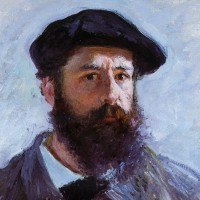
The central figure in Impressionism (it was his Impression: Sunrise of 1872 that gave the movement its name), he intensified its focus more than any other artist, continuing well into the next century to produce series of paintings showing minute variations in the light and color in basically the same scene. Cézanne famously said of him, "Monet is nothing but an eye—but my God, what an eye!" [1, 3]

Born in Glasgow, educated there, and teaching at its university for most of his life, Morgan was the preeminent Scots poet of his generation, embracing Modernism but never constricted by it. He prized the graffito "CHANGE RULES!" as an ambiguity that nicely sums up his work. He became the first Makar, or Poet Laureate of Scotland, in 2004. [3]
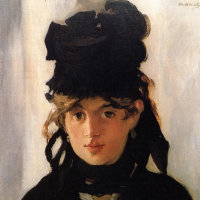
A descendant of Fragonard, pupil of Corot, sister-in-law of Manet, and later member of the Impressionist group, she brought a fine sensibility to her mainly domestic subjects painted in her characteristic limpid style. Some of her landscapes, however, could be as strong as any of her male colleagues. [1, 3]
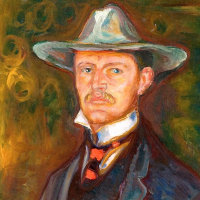
Tormented by the legacy of childhood trauma (he wrote "illness, madness, and death were the black angels that kept watch over my cradle"), Munch nevertheless managed to turn his neuroses into art that can stand with the most advanced painting in the rest of Europe and makes him a prime exponent of Expressionism. [3, 4]
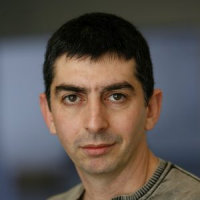
Nes comes from an family of Iranian immigrants to Israel. He is openly gay, and many of his photographs question Israeli attitudes to manhood and the its cultural traditions. [8]
GO TO: [A–C] [D–G] [H–K] [L-O] [P–S] [T–V] [W–Z]
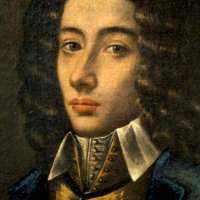
Although he died at the age of 26, Pergolesi had already written several operas, including the comedy La serva padrona, and a variety of religious music, most notably his Stabat Mater. His work is noted for its melodic grace and sweetness. More music is attributed to him than he could possibly have written! [8]
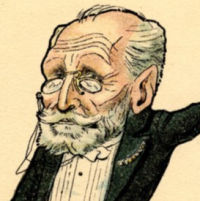
After a career as a dancer in France and Spain, Petipa accepted a position with the Imperial Theatre in St. Petersburg, and remained in Russia the rest of his life. His work as the choreographer of The Sleeping Beauty, The Nutcracker, and the 1895 revival of Swan Lake made him one of the most influential choreographers of all time. [10]
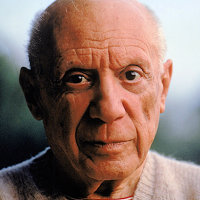
A master in every field he touched, Picasso dominated the world of 20th-century art not only with his invention of Cubism (with Georges Braque), but also by his astonishing ability to reinvent himself and respond to changing events, as with his Guernica of 1937. [7]
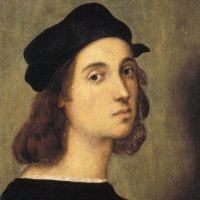
One of the towering geniuses of the Italian Renaissance, Raphael was born in central Italy, and worked there until 1508, when he moved to Rome to decorate several stanze in the Vatican for Pope Julius II, and later his successor Leo X. The influence of these and other works of the period can be seen in religious art for many centuries to come. He was also one of the many architects of St. Peters. [8, 9]
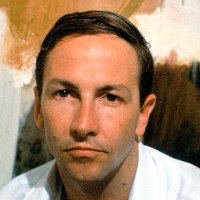
Rauschenberg famously stated that “painting relates to both art and life,” and he wanted to work "in the gap between the two.” He became famous for his Assemblages, paintings in an Abstract Expressionist style which incorporated real objects. He also made extensive use of photographs, screen-printed onto the painting surface. He was the winner of the International Grand Prize in Painting at the Venice Biennale of 1964. [12]
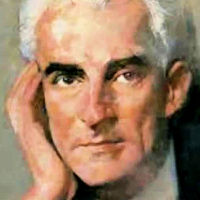
Though often grouped with Debussy as a musical Impressionist, Ravel was very much his own man. As a composer with a strong sense of tradition, he often wrote in older dance forms. As a virtuoso pianist, he wrote piano music of transcendent difficulty that extended the range of piano techniques. And as a master orchestrator, he enriched 20th-century music with some of its most vibrant colors. [2]

The greatest artist of the Dutch Golden Age, he nonetheless retained his own style which set him apart from his contemporaries. There is a strong baroque influence earlier in his career, but his later work developed a quality of deep introspection in which the subject seems to glow within rich layers of paint. [6]
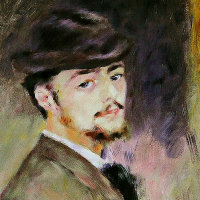
A leading member of the Impressionist group, he began his career as a china painter in the Limoges factory, which—together with his admiration of Rococo masters such as Watteau and Fragonard—may have influenced the sweetness of color seen in much of his work. He was more concerned with detail, and more interested in figures than most of his colleagues. [1, 3]
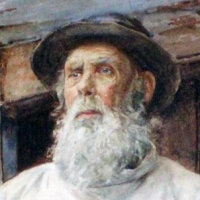
No information is readily available for this painter. The image at left is a painting by him but not of him. [11]
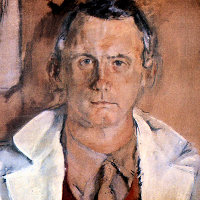
Rivers (born Yitzroch Loiza Grossberg), was a professional jazz soxophonist before taking up painting in his twenties. His earlier paintings were among the first to apply the painterly techniques associated with Abstract Expressionism to narrative and figurative subjects, often as variations on well-known paintings. Quite early on, he began incorporating images from commercial products, earning him the title of "Godfather of Pop Art" [12]
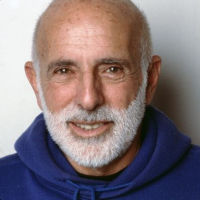
Beginning his career as a dancer and later choreographer with the American Ballet Theatre, Robbins later joined forces with Balanchine in the New York City Ballet. While he created numerous ballets in the classical tradition, his career on Broadway and in film is at least as important, including his work on West Side Story in both media. [10]
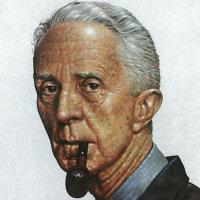
Rockwell began working as a professional illustrator at 18, and continued to become one of America's best-loved artists. His success had partly to do with the circulation of the periodicals (notably The Saturday Evening Post) that had him on their covers, and partly for his depiction of a family-friendly folksy America, but he was also an accomplished artist who could tackle serious subjects like racial and social injustice. [3]

A member of an unusually talented and literary family (father a Dante scholar, sister Christina a poet), he hesitated before devoting himself to painting, but then in 1848 became the co-founder and virtual leader of the Pre-Raphaelite Brotherhood, which influenced the course of Victorian art for the rest of the century. Although he became mannered in later life, his earlier works have a remarkable freshness and sincerity. [8]
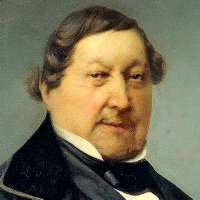
Rossini's fame rests on his 39 operas, especially the comedies, all written while he was still in his thirties. In 1829, fter writing Guillaume Tell, one of the foundation stones of French grand opéra, he essentially retired, settling in Paris, and writing only occasional pieces plus his masterpieces of sacred music, the Staba Mater of 1842 and Petite Messe solennelle of 1864. [8]
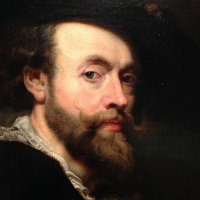
One of the giants of baroque art, Rubens developed the style of Titian into a powerful rhetoric applied equally to sacred and profane subjects, and exerted enormous influence in Spain, England, and France as well as in his native Flanders, continued in the work of his many pupils. He position at so many courts also made him invaluable as a diplomat. [7, 10]
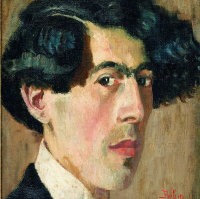
Romanian-born Rubin studied briefly in Jerusalem, then went to Paris before returning to Jerusalem in 1923. He was thus present long before Israel became a state. His general political views have been inclusionary, as expressed in the deliberately naïve style of his art. [8]
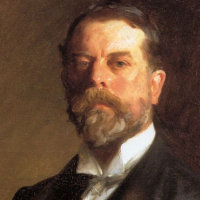
Sargent was born in Florence, the son of wealthy cultured parents, and much of his career was spent in Europe, although his rising fame as the preeminent society portraitist of his day also took him back to America. He is said to have hated portraiture, though, and diversified into landscapes and watercolors for his own satisfaction. [6]
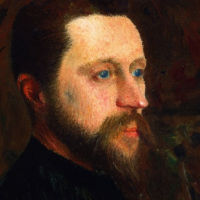
Seurat exhibited his masterpiece, Sunday Afternoon on the Grande Jatte, at the last Impressionst exhibition (1886), but he was never really one of their group, sketching out of doors, but preferring to work up his carefully balanced compositions in the studio. His formalization of the Impressionist technique of using contrasting colors in small brushstrokes led to the style known as pointillism or Neo-Impressionism, of which he was the founder. [2]
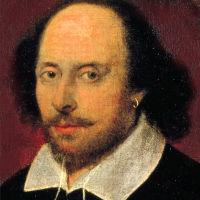
With almost 40 plays, 154 sonnets, and many longer poems, Shakespeare dominates English literature of his time, and world literature for ever after. To attempt a thumbnail biography would be both unnecessary and impossible. [9]
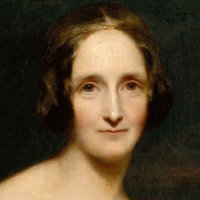
The daughter of the political philosopher William Godwin and the feminist activist Mary Wollstonecraft, Shelley fell in love with the poet Pecy Bysshe Shelley when he was already married and eloped with him to the continent to avoid ostracism at home. She wrote her most famous novel, Frankenstein (1818), in response to a competition with Lord Byron, John Polidori, and her lover during a rainy holiday in Switzerland. [11]

Sherman's work consists primarily of photographic self-portraits, depicting herself in many different contexts and as various imagined characters. Her series of 70 Untitled Film Stills (1977–80) were black-and-white take-offs of B-movies film noir. Later, she moved into large-format color photographs including detailed props and high-chroma color schemes. [12]
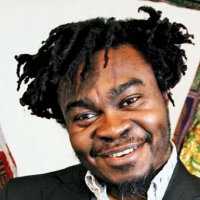
Born in London to Nigerian parents, Shonibare went back to Africa with them as a child, before returning to England in his late teens. He is famous for his use of highly colored African fabrics for his sculptures and assemblages, that frequent explore themes of colonialism and subjugation. Paralyzed on one side of his body through illness, he uses assistants to complete the work that he designs. [12]
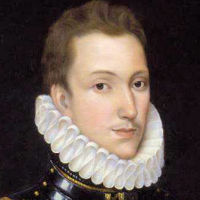
One of the most prominent figures of the Elizabethan age, and active as soldier, courtier, and diplomat, Sidney is also remembered for his long sequence of love sonnets (a precursor to Shakespeare's), and his romances Astrophel and Stella and The Countess of Pembroke's Arcadia. None of these, however, were published in his lifetime. [9]
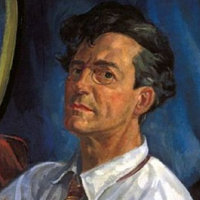
Sloan was one of a number of realist painters in New York in the early 20th century popularly known as "The Ashcan School" because of their fondness for less elevated subjects. Sloan himself was a committed Socialist. [3]
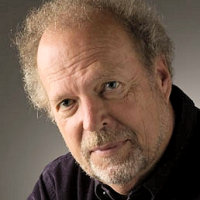
Born, educated, and living in California his entire life, Stroud is the author of several volume of poetry and has won many prizes. [5]
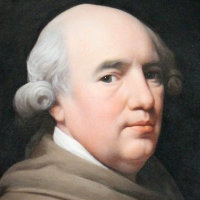
Originally self-taught as a painter, Stubbs also pursued studies in anatomy, of humans and later on his own initiative of the horse, publishing an Anatomy of the Horse in 1776. While most of his paintings are portraits of horses commissioned by their owners, Stubbs also did some subjects such as the Lion Attacking a Horse of 1770 which are clearly in the spirit of early Romanticism. [11]
GO TO: [A–C] [D–G] [H–K] [L-O] [P–S] [T–V] [W–Z]
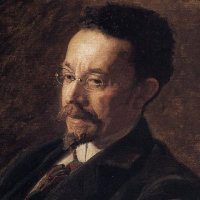
Born in Pittsburgh, Tanner trained in Philadelphia then moved to Paris in his early thirties, achieving early success in Biblical subjects exhibited at the Salon. He and his wife (also American) settled in France for the remainder of their lives. The recipient of an honorary Légion d'honneur, Tanner is notable as the first African American artist to achieve international renown. [8]
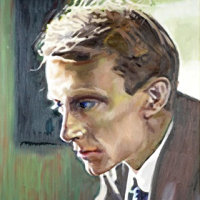
At the time he met Robert Frost in 1912, Thomas was known primarily as a critic, and as the author of numerous books about the English countryside. Frost encouraged him to kindle his prose into verse, resulting in a small but intense lyrical output before he was killed in the First World War. [5]
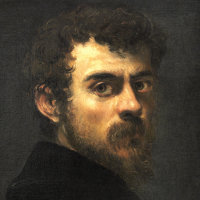
With Titian, Tintoretto is the great Venetian master of the earlier 16th century, excelling in both religious and secular subjects. His paintings are generally darker than Titian's and rougher in touch, but he yields nothing in vigor or the scope of his imagination. [7]
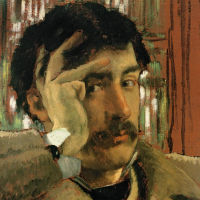
Tissot had a highly successful career as a society painter in Paris before he moved to London in 1871. His works, which now belong firmly in the history of British art, mostly depict affluent subjects in contemporary situations with a light narrative content. [3, 7]
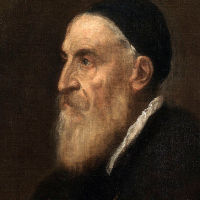
Arguably the greatest Venetian painter of the High Renaissance, he produced works in just about every genre over an exceptionally long career. Probably his greatest influence was in his handling of paint and use of color, which became a starting point for Rubens and others in the next century. [6, 9, 10]
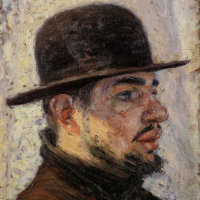
A hunting accident in childhood (he came from an aristocratic family) left Toulouse-Lautrec permanently stunted in stature, but this condition gave him both an entrée into the seamier side of Paris and the realism to depict it as he found it, with plenty of glamor certainly, but without idealization or moralizing. [3]
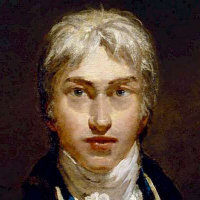
Rivaled only by Constable, Turner was the dominant British landscape painter of the first half of the 19th century, he started his career with topographical views intended for engraving, and ended with works whose subjects were dissolved in veils of paint and light. [5, 11]
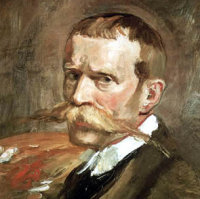
Uhde "was a German painter of genre and religious subjects. His style lay in between Realism and Impressionism, he was once known as 'Germany's outstanding impressionist' and he became one of the first painters to introduce plein-air painting in his country." [Wikipedia] [8]
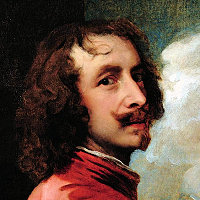
For a time the principal assistant to Peter Paul Rubens, Van Dyck had a shorter but similarly stellar and varied career, painting in most of the major baroque genres. He was especially known as a portraitist, particularly in England, where he served the courts of both James I and Charles I. [10]
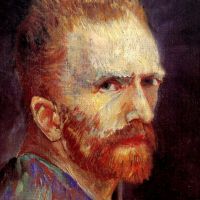
Beginning in his native Holland with dark paintings of peasant life, his style was transformed when he went to Paris in 1886, and thence to Arles, where he lived with Paul Gauguin. Although prolific in his output, he suffered from severe depression and eventually shot himself, while living close to his doctor in the north of France. [2]

A contemporary and friend of Géricault and Delacroix, he specialized in literary, exotic, and increasingly contemporary subjects, known for their free handling and striking color. [11]
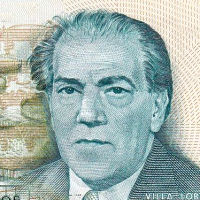
Villa-Lobos studied the cello with his father and made an early living playing in orchestras, but as a composer he was largely self-taught. Visiting Paris in 1927–30, he picked up the prevailing neo-classicism, and returned to Brasil to write a series of pieces called Bachianas Brasilieras infusing baroque forms with Brazilian folk styles. [4]
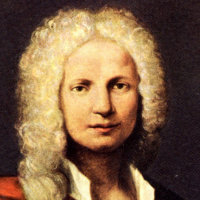
Vivaldi, who was ordained as a priest, but lived a largely secular life, was an amazingly prolific composer of music in most genres, including opera, oratorio, and the instrumental concerti on which his later fame mainly rests. [8]
GO TO: [A–C] [D–G] [H–K] [L-O] [P–S] [T–V] [W–Z]
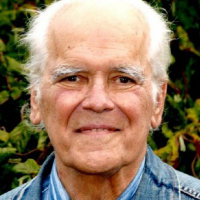
Born in Ohio, Wagoner moved to Washington State in 1954, at the urging of his mentor Theodore Roethke. This unlocked a close affinity with the natural environment, to the point where he was generally regarded as the national poet of the Pacific Northwest. Wagoner was Chancellor of the Academy of American Poets from 1978 to 1999. [5]

Warhol (born Andrew Warhola Jr.) worked in many media beside painting, including silk-screen print-making, sculpture, and film. Many of his images, such as those of Campbell soup cans, were not only taken from industrial sources, but reproduced multiple times by industrial methods. His studio, which he called The Factory, became the nerve center of American Pop Art. [12]
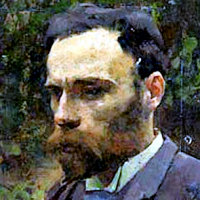
Beginning in an academic manner, he became drawn to Pre-Raphaelite style and subjects, with illustrations from Shakespeare, Greek myth, and Arthurian legend. [11]
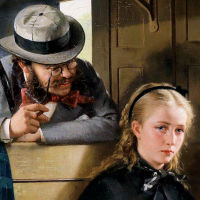
Woltze specialized in painting scenes from contemporary life, often with an underlying story, as in The Annoying Gentleman (1874, detail at left; there is no picture of the artist available). [7]
